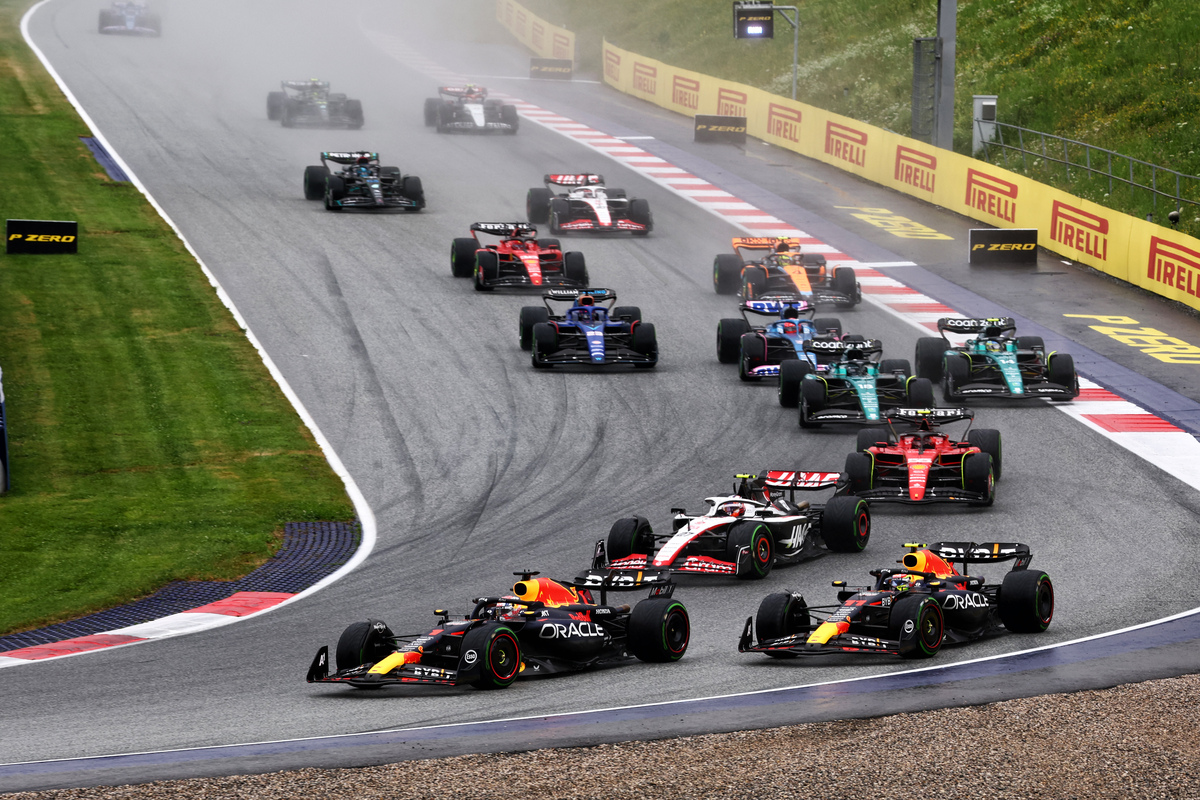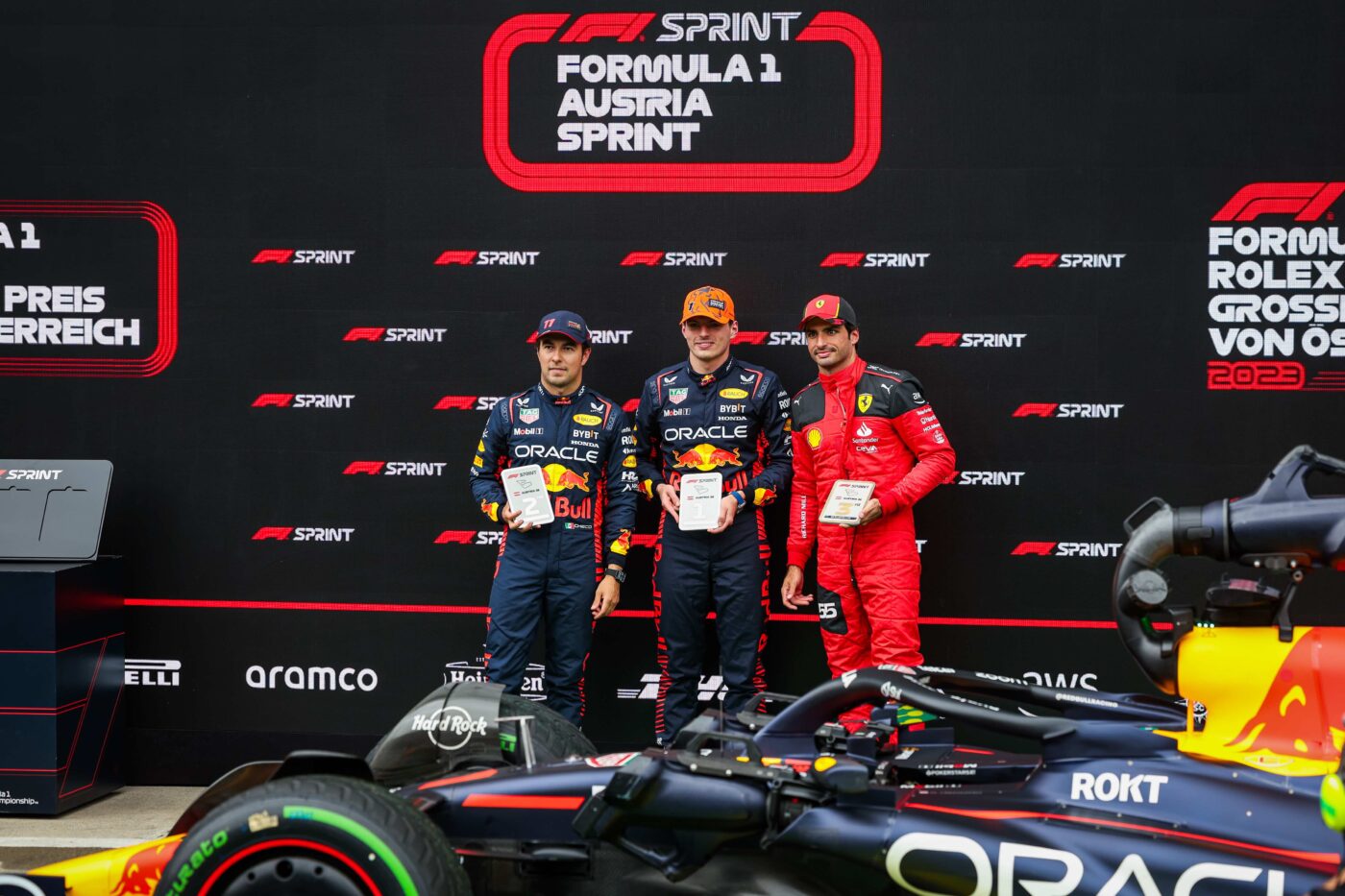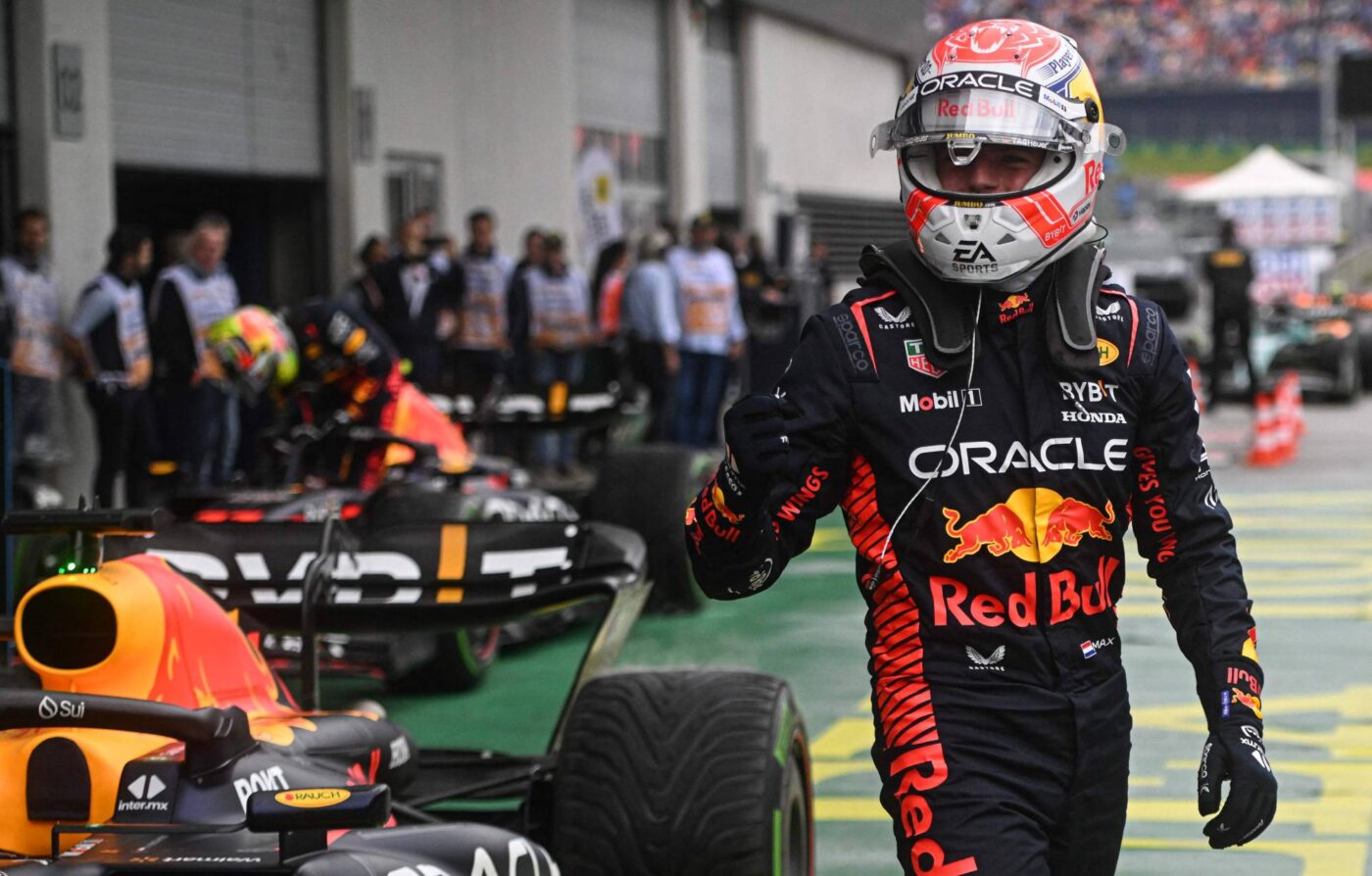First debuting in 2021, the F1 Sprint promised to deliver higher-stakes wheel-to-wheel action, from Friday through to Sunday. By increasing the race sessions, and reducing practices, drivers and their teams are encouraged to maximise their peak performance – and potential points – across an entire race weekend, upping the ante every time they get behind the wheel.
In 2022, qualifying sessions determined the final grid positions for the sprint, with the sprint results setting the starting positions for Sunday’s Grand Prix; but not in 2023.
New rules approved for 2023 will reduce practice time even further, incorporating two fast and furious qualifying sessions that demand perfection from the drivers and their teams for the offset.

Here’s everything you need to know.
Friday starts with the only practice of the weekend, a single-hour practice session for the 10 race teams to assess their cars in real-world conditions, fine-tune any upgrades that travelled with them, and finalise race strategy and tyres for Sunday’s Grand Prix.
That’s followed by a competitive qualifying session the same as we’ve seen throughout the season, determining the starting grid for Sunday’s Grand Prix and limiting the team’s opportunities for early advantages ahead of two competitive race formats.
Penalties incurred during Friday’s first practice session or qualifying will be applied to Sunday’s Grand Prix, while those incurred in the Sprint Shootout will be carried to the Sprint.
Formula 1 Sprints 2023
| Sprint 1 | 29 April | Azerbaijan Grand Prix |
| Sprint 2 | 1 July | Austrian Grand Prix |
| Sprint 3 | 29 July | Belgian Grand Prix |
| Sprint 4 | 7 October | Qatar Grand Prix |
| Sprint 5 | 21 October | US Grand Prix |
| Sprint 6 | 4 November | Sao Paulo Grand Prix |
Sprint Shoot Out
FP2 will be replaced by a quicker, shorter qualifying session which will determine the starting grid positions for the subsequent F1 Sprint session.
The Shoot Out is the same format as traditional qualifying, each separated by a 7-minute break, however, teams and drivers will have incrementally shorter sessions to score points as the qualifying sessions progress.
| SQ1 | 12 minutes | Medium |
| SQ2 | 10 minutes | Medium |
| SQ3 | 8 minutes | Soft |
In Q1, teams will have 12 minutes to race around the track – enough time for about two runs, each separated by a pit stop. As the Qualifiers progress, the shortened time sessions increase the pressure on the race teams, who won’t have the opportunity to bring their cars into the pits and switch over for fresh tyres, limiting their performance and options.

The Sprint
Saturday’s Sprint will be a 100km race session with all cars on the track, racing across 30 minutes to score maximum points heading into Sunday’s Gran Prix.
Points are scored for the Top 8 drivers.
| P1 | 8 points | P5 | 4 points |
| P2 | 7 points | P6 | 3 points |
| P3 | 6 points | P7 | 2 points |
| P4 | 5 points | P8 | 1 point |
A maximum of 34 points are available across the entire race weekend; the winner of the Sprint will claim 8 points for P1, the winner of the Grand Prix takes 25, and finally, the driver who races the fastest lap in. the Grand Prix with receive a bonus point – who will be the best driver across the race weekend?
